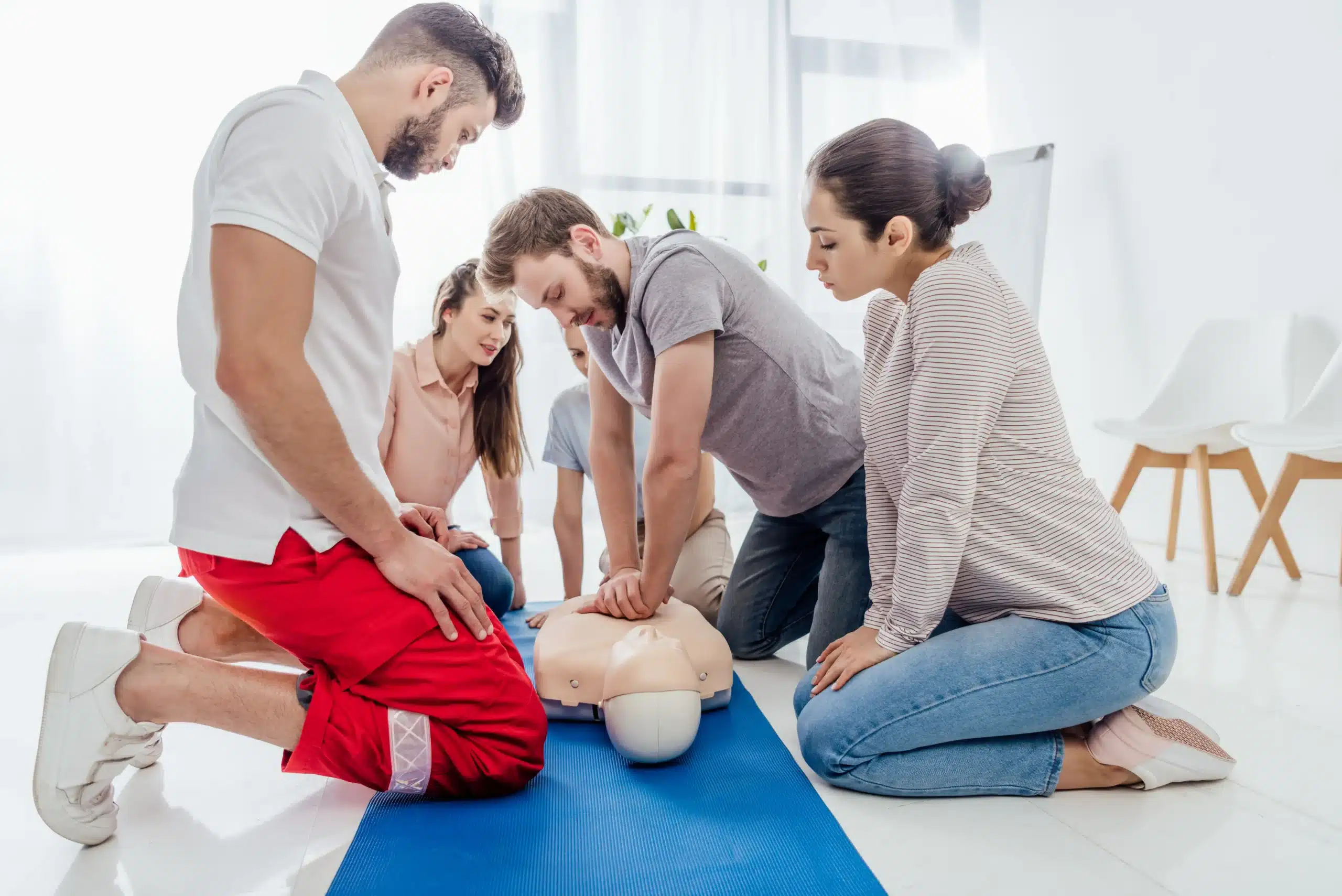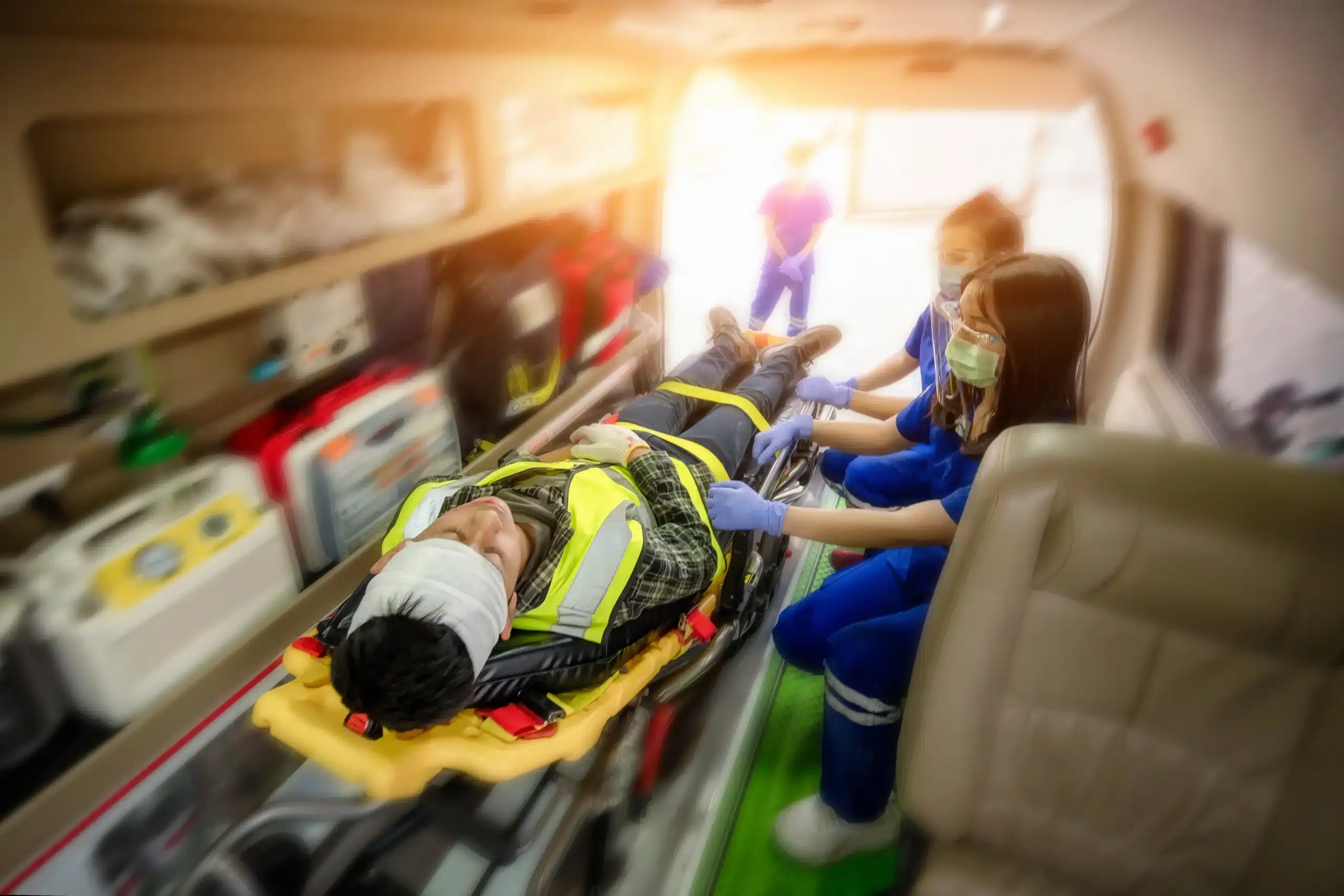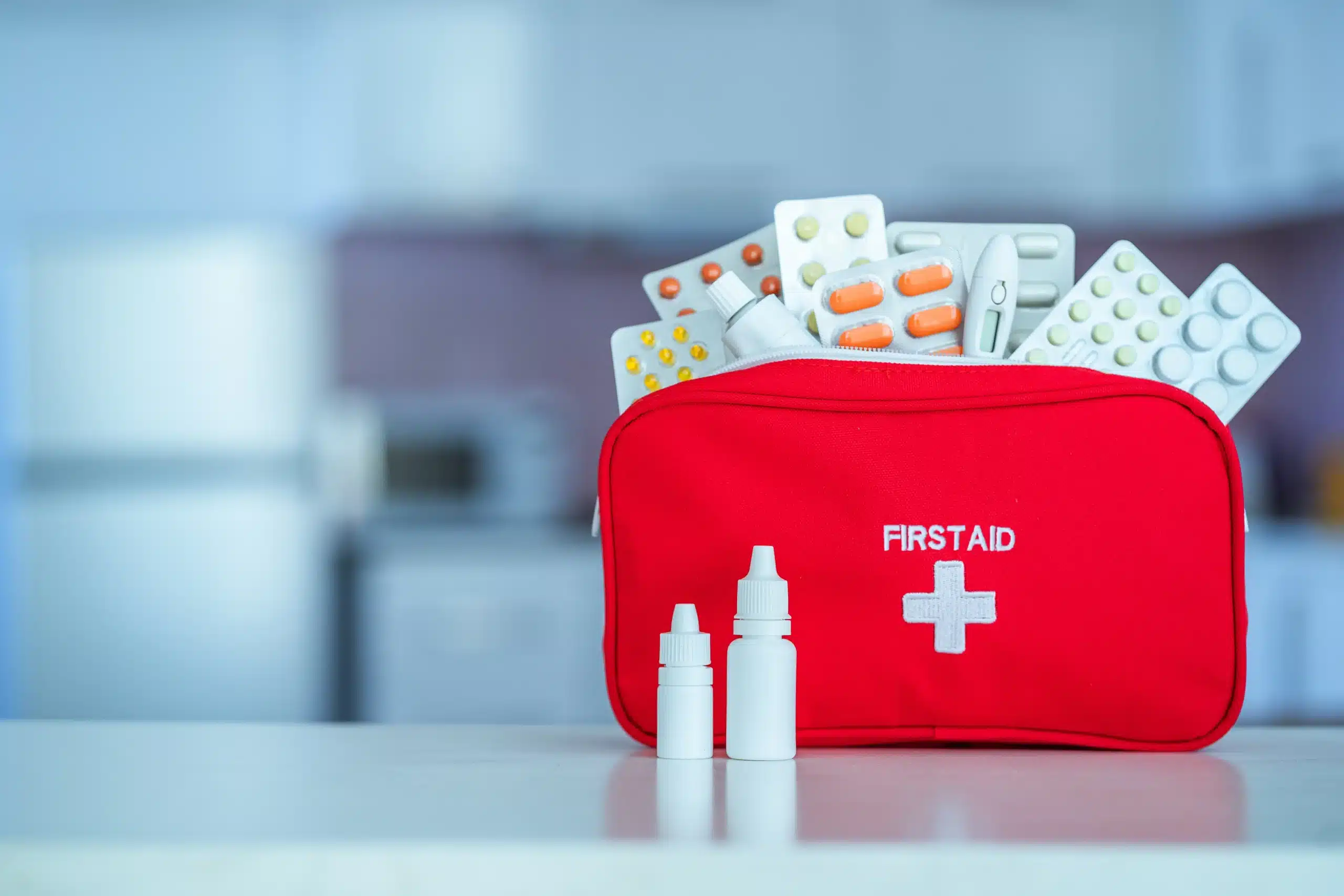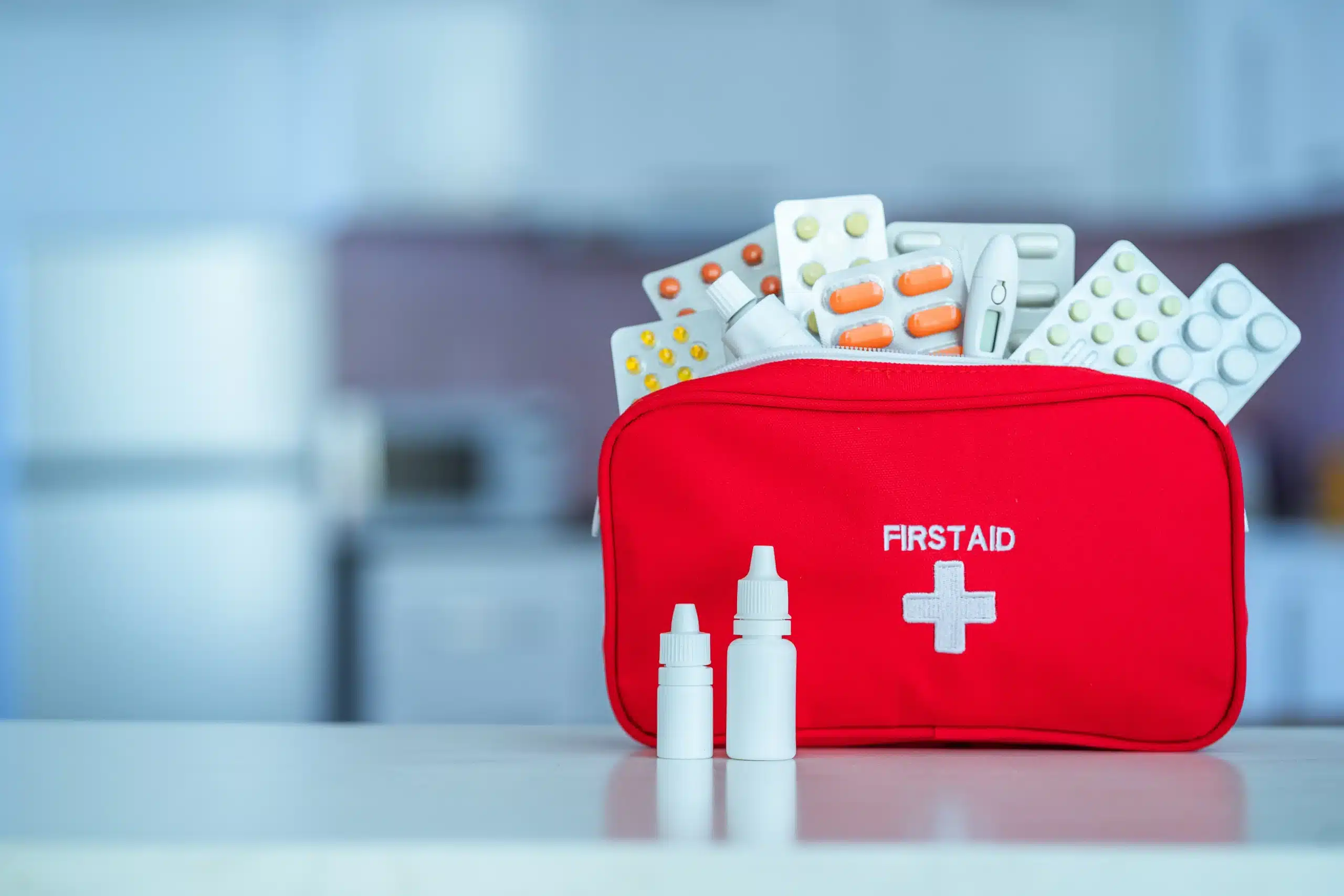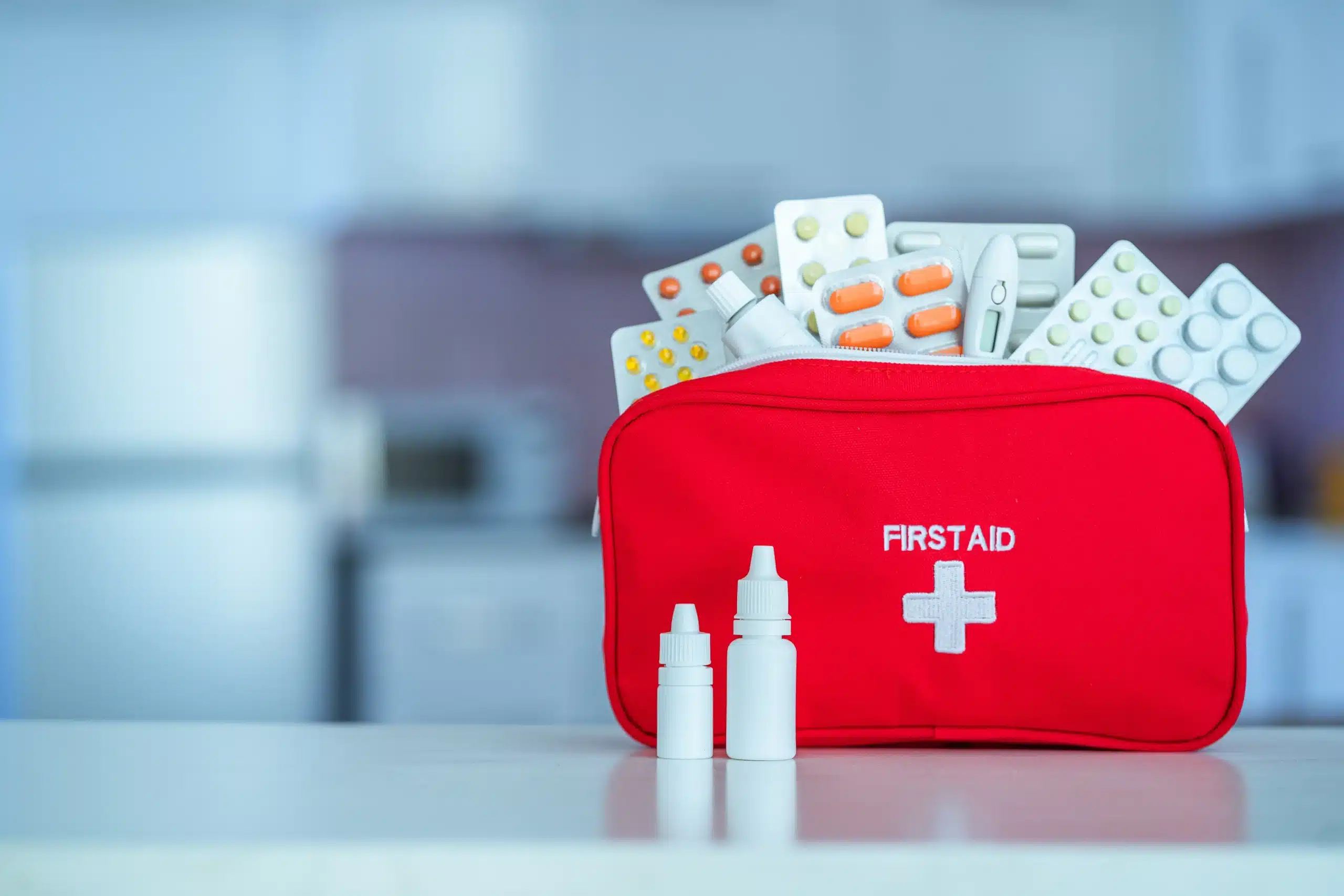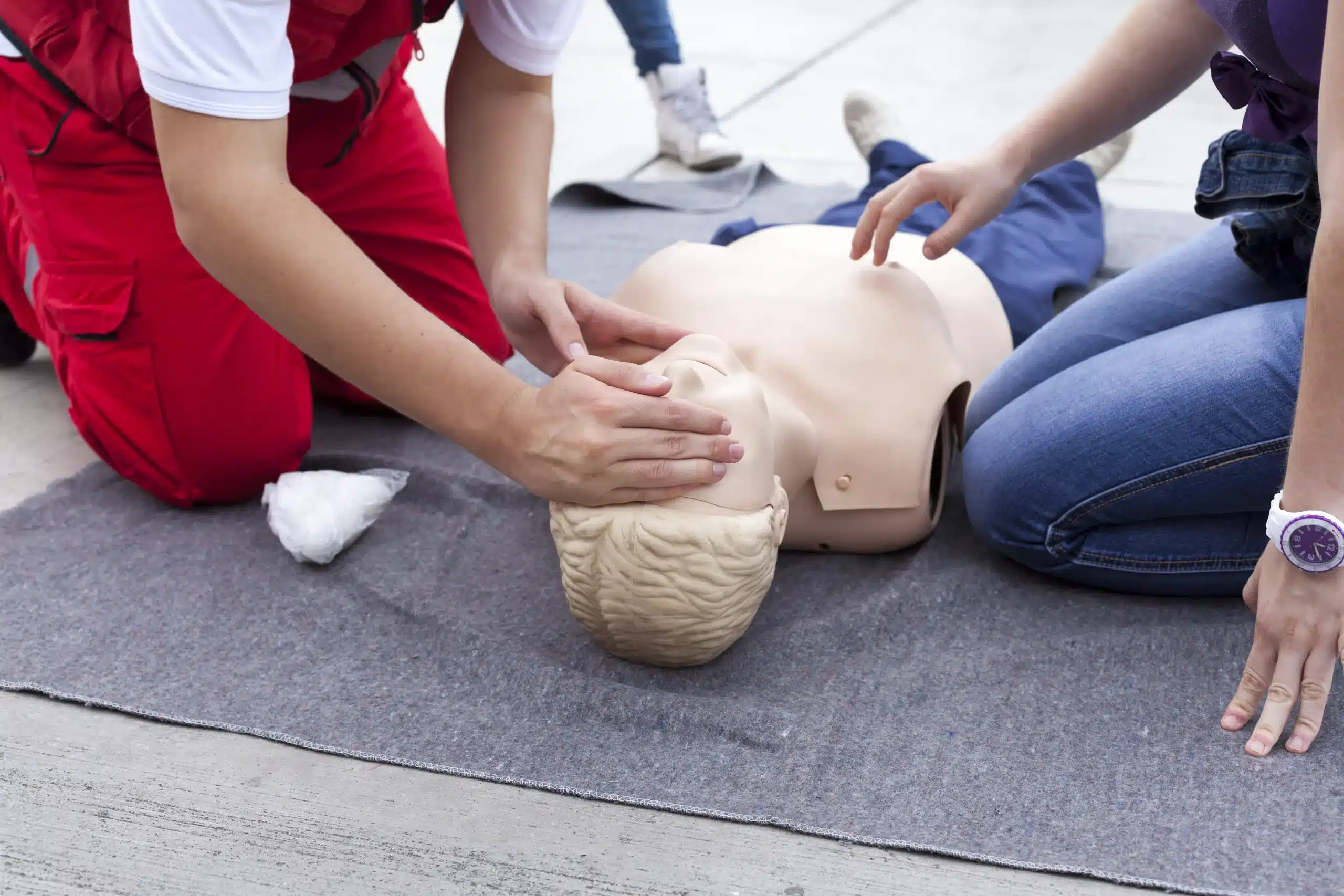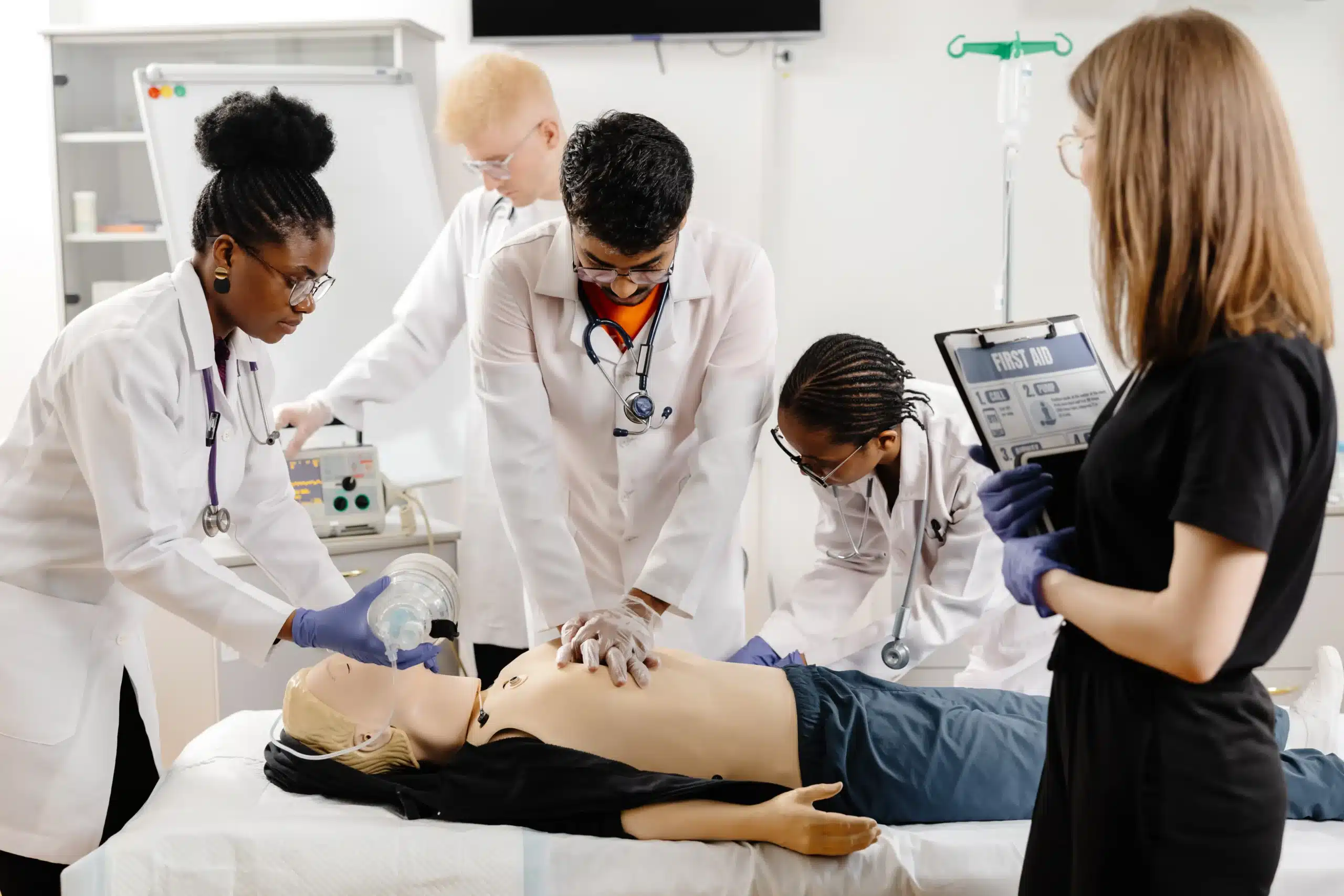As healthcare professionals, we dedicate ourselves to caring for others. But who takes care of us? Making sure our skills are sharp and our certifications are up-to-date is part of that self-care. It’s about ensuring we’re equipped to handle any emergency and provide the best possible care to our patients. If you’re a healthcare provider searching for “BLS recertification near me,” this guide is designed for you. We’ll cover everything from the essential skills reviewed in a BLS recertification course to finding affordable and convenient training options in your area. Let’s make this recertification process as straightforward as possible.
Key Takeaways
- Maintain your skills and demonstrate your commitment to patient care by recertifying your BLS qualification: Regularly practicing core skills like CPR and AED use ensures you’re prepared for emergencies.
- Find a course that fits your learning style and schedule: Research various providers, compare costs, and consider online or in-person options based on your preferences.
- Prepare for your recertification by reviewing the latest guidelines and practicing your skills: This preparation will boost your confidence and ensure you’re ready for the written exam and skills check.
What is BLS Recertification?
What is BLS & Why Recertify?
Basic Life Support (BLS) certification equips healthcare providers, lifeguards, fitness instructors, and other professionals with the skills to respond to medical emergencies. This training covers essential life-saving techniques and procedures. BLS certification is typically valid for two years, and it’s important to know there’s no grace period after the expiration date. Letting your certification lapse could affect your ability to provide care when it matters most. Staying current with your BLS certification shows your commitment to patient safety and high-quality care. BLS recertification ensures you’re up-to-date on the latest guidelines and best practices, maintaining your proficiency and confidence.
Key BLS Recertification Skills
A BLS recertification course reinforces essential skills like using an automated external defibrillator (AED), basic airway management, and techniques for helping someone who is choking. The curriculum typically includes updates from the latest American Heart Association (AHA) guidelines, covering the Chain of Survival, one and two-rescuer CPR, and AED use for adults, children, and infants. You’ll also review the differences in rescue techniques for various age groups, bag-mask techniques, rescue breathing, and choking relief. These skills are vital for responding effectively to emergencies and providing the best possible care. For convenient and affordable recertification options in Vallejo, Benicia, or American Canyon, check out Vallejo CPR Classes.
Find Top BLS Recertification Providers Near You
Finding the right BLS recertification course requires a little research to ensure it meets your needs and learning style. Here’s how to get started:
Search Online
Start with a simple online search. Type “BLS recertification near me” into your search engine to see local options. Look for providers with user-friendly websites that clearly outline course content, schedules, and pricing. Reading online reviews can also give you valuable insights from other students. Consider factors like the provider’s reputation, the quality of instruction, the amount of hands-on practice, and the overall value.
Check Local Healthcare Institutions & Training Centers
Local hospitals, clinics, and community colleges often offer BLS recertification courses. Check their websites or contact them directly to inquire about upcoming classes. These institutions often have experienced instructors and provide high-quality training. Local training centers, like Vallejo CPR Classes, are another excellent option. They frequently offer a variety of American Heart Association (AHA) certified courses, making them a reliable resource for recertification.
Highly-Rated BLS Recertification Providers
Here are a few well-regarded BLS recertification providers to consider:
Vallejo CPR Classes
Vallejo CPR Classes is known for its convenient schedules, low price guarantee, and commitment to providing high-quality instruction. They offer a range of AHA-certified courses, including BLS, ACLS, and PALS. Serving Vallejo, Benicia, and American Canyon, they are affiliated with Safety Training Seminars, a trusted AHA Training Center with numerous locations across Northern California. You can contact them directly to learn more.
American Heart Association
The American Heart Association (AHA) offers various options for BLS recertification, including in-person and online courses. As a leading authority in emergency cardiovascular care, the AHA provides evidence-based training and certification recognized nationwide.
American Red Cross
The American Red Cross also provides BLS recertification courses with flexible training formats to suit different learning styles. They offer both online and in-person options, making it easy to find a course that fits your schedule.
Local Hospitals & Medical Centers
Many local hospitals and medical centers offer BLS recertification courses for their staff and the community. Check with hospitals in your area to see what courses they offer and whether they are open to the public.
Community Colleges
Community colleges frequently offer affordable BLS recertification courses. These courses are often taught by experienced professionals and provide a solid foundation in BLS skills. Check with your local community college for course availability and registration information.
Online vs. In-Person BLS Recertification: Choose the Right Format
Deciding between online and in-person BLS recertification depends on your learning style, schedule, and budget. Both formats cover the same core material and result in the same certification, so weigh the pros and cons of each to find what works best for you.
Pros & Cons of Online Courses
Online BLS renewal courses offer undeniable flexibility. You can study at your own pace, fitting the training around your busy schedule. Many providers, like ACLS Now, offer comprehensive online courses that cover the same material as in-person classes. This allows you to renew your certification from anywhere with an internet connection. However, online learning can also present challenges. It requires self-discipline, and it can be easy to get sidetracked. Some students find it harder to absorb information without direct interaction with an instructor.
Benefits of In-Person Training
In-person BLS recertification provides valuable hands-on learning and immediate feedback from an instructor. Vallejo CPR Classes offers in-person BLS CPR courses that typically last between four and six hours, providing ample opportunity for practice. This format allows you to ask questions in real-time and learn from the experiences of other students. Plus, practicing skills like chest compressions and rescue breaths in a real-world setting can build confidence.
Choose the Best Format
When selecting a BLS recertification provider, consider your learning preferences. Do you thrive in a structured classroom environment, or do you prefer the flexibility of online learning? Also, evaluate the provider’s reputation—AHA certification is essential—and course costs. Think about your schedule and how much time you can realistically dedicate to studying. By carefully weighing these factors, you can choose the format that best suits your needs and sets you up for success. Contact Vallejo CPR Classes to learn more about our course offerings.
BLS Recertification Costs & Value
Understanding the cost of BLS recertification and what influences pricing is essential. It helps you budget effectively and find the best training that fits your needs. Let’s break down the typical costs, influencing factors, and potential ways to save.
Typical Local Prices
BLS recertification prices can vary based on location and training center. In Vallejo, California, you can find recertification courses for around $25 at various locations, like those offered through BLS Test Center. This price point is a good benchmark when comparing options. Remember that prices can fluctuate, so it’s always a good idea to check with specific providers like Vallejo CPR Classes for their most up-to-date pricing.
Factors Affecting Course Costs
Several factors contribute to the overall cost of your BLS recertification. A training center’s reputation and affiliation with the American Heart Association (AHA) often influence pricing. AHA-certified courses are known for their comprehensive and high-quality content, which can be a factor in the cost. Also, consider if the provider offers other courses or specialized training beyond basic BLS. These additional offerings can sometimes affect the pricing structure. Finally, your chosen learning format—online versus in-person—plays a role. Each format has its own associated costs.
Discounts & Package Deals
One smart way to manage your recertification costs is to look for discounts or package deals. Many training centers offer these to make their courses more accessible. For example, Safety Training Seminars, which offers AHA-certified CPR classes in Vallejo, is committed to providing competitive pricing and a low-price guarantee. If you need other certifications, bundling your BLS recertification with other courses like ACLS or PALS, can also lead to significant savings. Always inquire about potential discounts or promotions when you contact a training center. It’s a great way to get the training you need while staying within your budget.
Enroll in a BLS Recertification Course
Now that you know where to find BLS recertification courses, let’s talk about getting registered. This process is usually straightforward, but having a checklist makes it even easier.
Steps to Register
First, select your preferred training provider. Think about what’s important to you: learning style, schedule, and budget. Do you prefer learning online or attending in-person classes? Once you’ve narrowed down your options, visit the provider’s website or give them a call. Most providers, like Vallejo CPR Classes, have easy online registration. You’ll likely create an account, choose your course date and time, and provide some basic information.
Required Documents
Before you head to class, double-check that you have the necessary documents. You’ll need a current BLS Provider card or a card that recently expired. Some providers, like the American Red Cross, allow recertification within 30 days of expiration. It’s always a good idea to confirm the specific requirements with your chosen provider.
Course Duration & Schedule
BLS recertification courses refresh your essential skills efficiently. In-person courses typically run between 2.5 and six hours, depending on the provider and the curriculum. Vallejo CPR Classes offers courses that provide a good balance of instruction and hands-on practice. When choosing a course, consider your schedule and find a time that works for you. Many providers offer weekend and evening classes to accommodate busy professionals.
Choose the Best BLS Recertification Provider
Finding the right BLS recertification provider is crucial for a valuable learning experience. Here’s what to consider:
Check Provider Credentials & Accreditation
First, confirm the provider’s credentials. Ensure they are accredited by a recognized organization like the American Heart Association (AHA). This guarantees the course meets industry standards and your certification will be widely accepted. Vallejo CPR Classes is affiliated with Safety Training Seminars, an AHA Training Center, ensuring high-quality instruction and valid certification.
Read Reviews & Testimonials
Word-of-mouth is powerful. Look for reviews and testimonials from past students to gain insights into the quality of instruction, course materials, and overall experience. A provider with consistently positive feedback demonstrates a commitment to student satisfaction. You can often find reviews on platforms like Google, Yelp, or the provider’s website.
Assess Course Content & Materials
Take time to review the course content and ensure it covers the latest AHA guidelines. Does the provider offer updated materials and equipment? Hands-on practice is essential for mastering BLS skills, so inquire about the ratio of instructors to students and the amount of practice time provided. Consider whether the provider offers additional training or specialized courses that align with your career goals. AHA BLS courses often include comprehensive training materials and resources.
Prepare for Your BLS Recertification
Now that you’ve found a course, it’s time to prepare. These tips can help you make the most of your BLS recertification experience.
Refresh Your Knowledge
Brushing up on the material before your recertification course or exam is crucial. BLS guidelines and best practices can change, so reviewing the most current information will ensure you’re up to date. This preparation will also help you feel more confident going into the recertification process. You can review the current guidelines on the American Heart Association website.
What to Expect During Recertification
BLS recertification involves both a written exam and a skills check. During the skills check, you’ll demonstrate your proficiency in CPR, using an AED, and relieving choking. At Vallejo CPR Classes, our in-person BLS CPR courses typically last between four and six hours. This allows plenty of time for hands-on practice and immediate feedback from our certified instructors.
Tips for Success
Here are a few tips to help you succeed with your BLS recertification:
- Review the material: Familiarize yourself with the latest BLS guidelines and protocols before your course or exam.
- Practice your skills: Hands-on practice is essential for mastering CPR techniques. Practice on a manikin whenever possible.
- Ask questions: Don’t hesitate to ask your instructor for clarification on anything you’re unsure about. Contact us with any questions.
- Schedule your skills check: If your recertification requires an in-person skills check, schedule it promptly to avoid missing your deadline.
- Consider your learning style: When choosing a course, think about whether you learn best in an online or in-person setting. Both formats have their advantages, so choose the one that suits your needs. You can learn more in our section on choosing between online vs. in-person training. We offer both options at Vallejo CPR Classes.
- Check for discounts: Many providers offer discounts for groups or early registration, so be sure to ask. Check out our low price guarantee.
Common BLS Recertification Questions
It’s normal to have questions about BLS recertification. Here are answers to some frequently asked questions:
What is BLS recertification?
BLS recertification is how healthcare providers maintain their skills and knowledge of Basic Life Support. It’s essential for those who need BLS certification for their jobs. Recertification ensures you stay up-to-date on the latest guidelines and best practices for delivering high-quality CPR. For a deeper understanding of BLS and its importance, explore this resource on common misconceptions.
How often do I need to recertify?
Typically, BLS certification is renewed every two years. Some employers may require more frequent updates, so check their specific policies. This article further clarifies BLS renewal requirements.
Can I take BLS recertification online?
Yes, many accredited organizations offer online BLS recertification courses, which are just as credible as in-person training. Make sure the course you choose is recognized by your employer or governing body. Online recertification offers flexibility and convenience, allowing you to renew from anywhere with an internet connection. Learn more about the different online options available for recertification.
What should I expect during the recertification course?
During the recertification course, you’ll review the latest guidelines, practice your skills, and take a written exam. This ensures you’re confident and competent in performing BLS. This guide offers a detailed overview of what to expect during BLS recertification.
What are common mistakes to avoid during recertification?
One common mistake is not reviewing the course material before the recertification test. BLS guidelines can change, so brushing up on the material beforehand is important. Another mistake is waiting until the last minute to recertify. Give yourself plenty of time to find a course and prepare. This article discusses common pitfalls in BLS recertification and how to avoid them.
Related Articles
- BLS Renewal Near Me: How to Recertify – Vallejo CPR Classes
- BLS Renewal in Vallejo: Your Simple Guide – Vallejo CPR Classes
- BLS Certification in American Canyon: Your Guide – Vallejo CPR Classes
- BLS for Healthcare Providers in Benicia – Vallejo CPR Classes
- HeartCode BLS in American Canyon: Your Guide – Vallejo CPR Classes
Frequently Asked Questions
How often do I need to recertify my BLS certification? BLS certification is typically valid for two years. It’s always best to check with your employer or certifying organization to confirm their specific renewal requirements, as some organizations may have different policies. Don’t wait until the last minute; plan and schedule your recertification in advance to avoid any lapses in your credentials.
What’s the difference between online and in-person BLS recertification? Both online and in-person BLS recertification courses cover the same core content and lead to the same certification. The main difference lies in the learning format. Online courses offer flexibility, allowing you to learn at your own pace and on your own schedule. In-person classes provide a structured learning environment with direct interaction with an instructor and hands-on practice. Consider your learning style and schedule when deciding which format is best for you.
How much does BLS recertification cost? The cost of BLS recertification varies depending on the training provider, location, and course format. Check with different providers in your area, like Vallejo CPR Classes, to compare prices and find the best value. Look for potential discounts or package deals that may be available, especially if you’re interested in taking multiple courses.
What should I bring to my BLS recertification course? Typically, you’ll need to bring your current BLS Provider card (or a card that recently expired) and a government-issued photo ID. Some providers may have additional requirements, so it’s always a good idea to confirm with them beforehand. If you’re taking an in-person course, you might also want to bring a notebook and pen for taking notes.
How can I find a reputable BLS recertification provider? Start by searching online for providers in your area. Look for organizations accredited by the American Heart Association (AHA), as this ensures the course meets industry standards. Read reviews and testimonials from previous students to get a sense of the quality of instruction and the overall learning experience. Don’t hesitate to contact providers directly to ask questions about their courses, instructors, and certification process.
